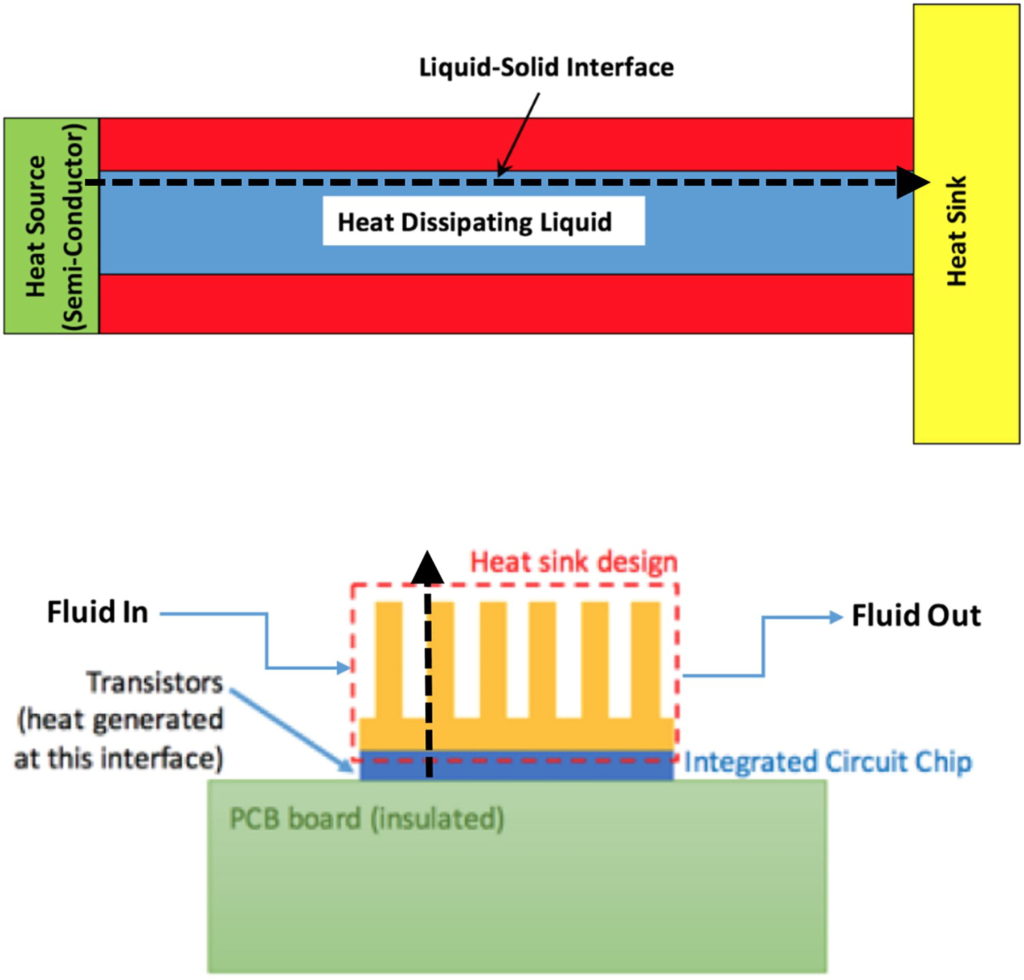
The further miniaturization of high power consumption semiconductor devices is limited by the significant challenge posed by component overheating. New strategies suggested for dissipating heat in nanoscale devices include the use of heat dissipating nano-channels and nano-fins, where the interfacial thermal resistance across the solid–liquid interface plays an important role during heat dissipation. The interface thickness can be a significant fraction of the total system dimension, and the interfacial resistance can differ significantly from that of the bulk fluid.
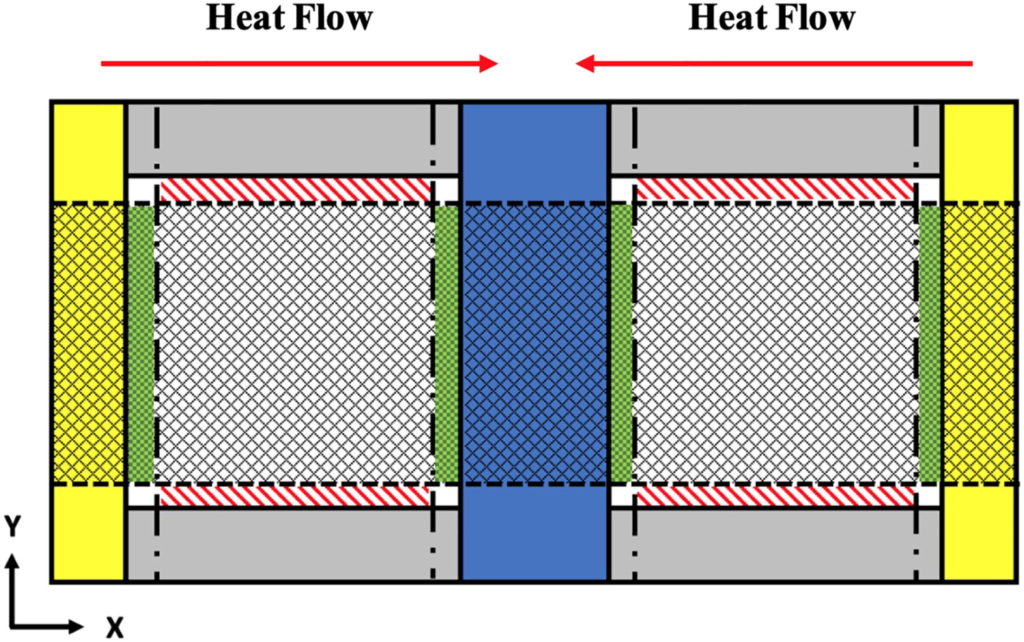
The yellow and blue stand for hot and cold copper walls respectively. The gray stands for adiabatic wall without controlling the temperature. Inside copper walls, two compartments are filled with fluids. Using the above constructed model system, we were able to examine the thermal resistance of both the perpendicular and parallel interfaces simultaneously through a single simulation.

δ stands for the thickness of interfacial region; κ|| is for thermal conductivity in the parallel direction; κ⊥ is for thermal conductivity in the perpendicular direction; κb is for thermal conductivity in the bulk. We have found that κ|| is much higher than κ⊥ and κb, which is a result of adsorption enhancement to overcome the Kapitza resistance.
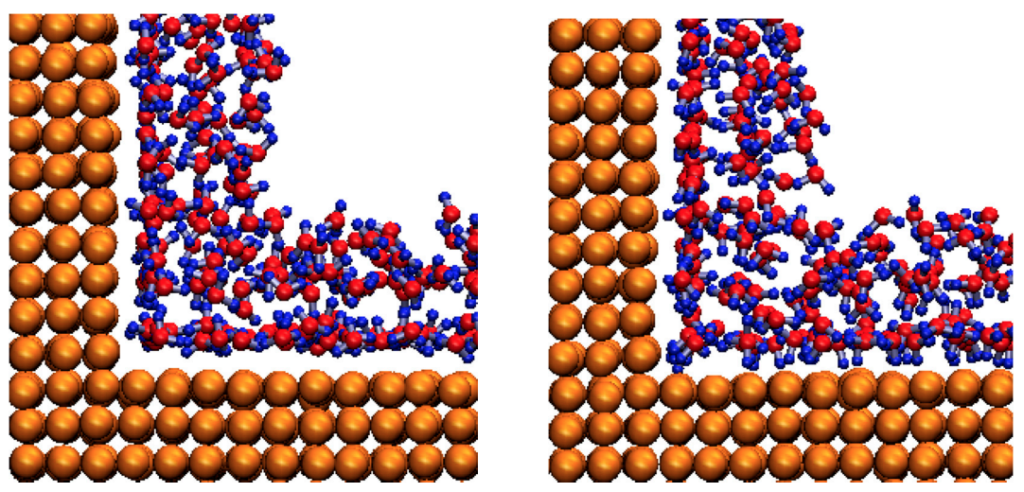
In another investigation, we introduced charges to solid wall atoms and studied the relationship between the surface properties and the nature of the fluids examined. Our studies showed that such modifications could lead to over six-fold increase in heat transfer rates. Since the introduction of electrostatic force tended to attract water molecules closer to the wall, thus, the first adsorption peak ended up closer to the wall. As a result, this increased the κ⊥ significantly.
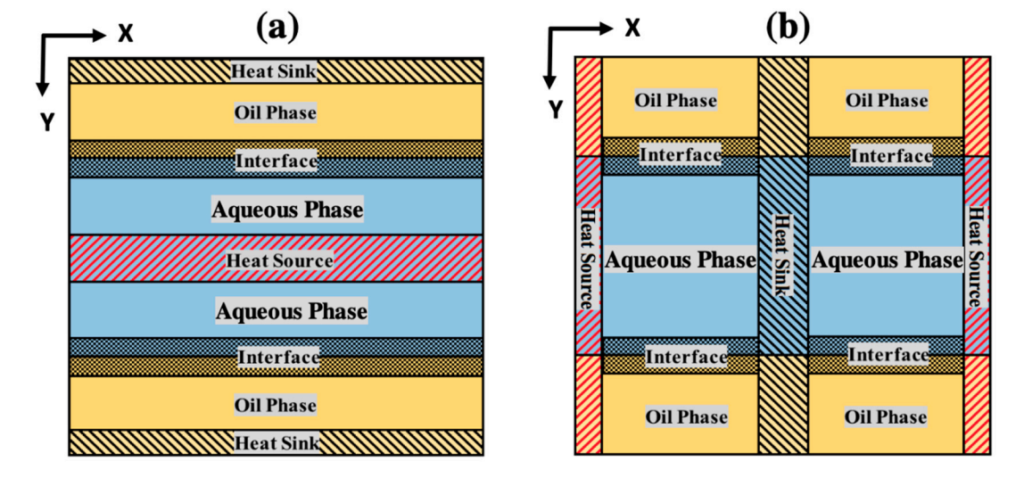
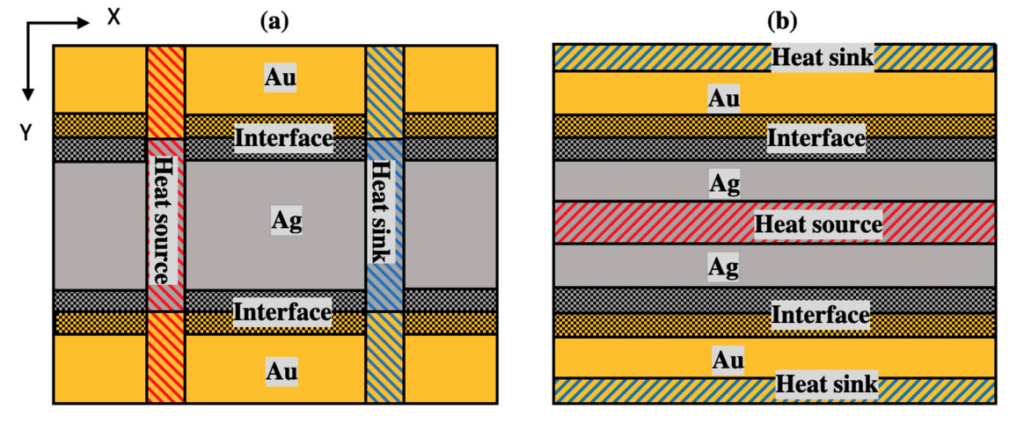
Similar behaviors have also been found in liquid-liquid and solid-solid interfaces. Since heat transfer occurs anisotropically, more effectively along the interfacial surface than in the bulk fluid, nanoscale strategies should consider dissipating heat along such interfaces rather than through the bulk fluid. Many of these strategies can be equally applicable to solid-liquid, liquid-liquid, and solid-solid interfaces.